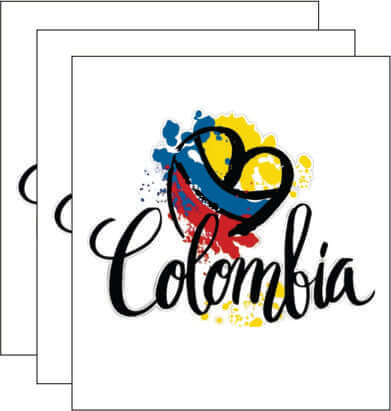Introduction
To achieve high-quality Direct-to-Film (DTF) prints, several factors need to be considered, including materials, techniques, and equipment. Here’s a comprehensive guide to help you create vibrant and long-lasting DTF prints.
Choosing the Right Materials
Film: Opt for high-quality PET films specifically designed for DTF printing. Ensure the film has the correct thickness and coating to support ink adhesion.
Inks: Use pigment inks that are compatible with DTF printing. These inks should provide vibrant colors and durability.
Adhesive Powder: Select a fine adhesive powder that melts evenly and provides strong adhesion to the fabric.
Optimizing Printing Techniques
Printer Settings: Adjust your printer settings to match the specifications of the PET film and inks. Ensure the print resolution is high for detailed and sharp prints.
Color Management: Calibrate your printer regularly and use ICC profiles to maintain color accuracy and consistency.
White Ink Underbase: Apply a white ink underbase to enhance the vibrancy of colors, especially on dark fabrics.
Proper Curing Process
Curing Temperature: Follow the recommended curing temperature for the adhesive powder and the ink. Typically, a temperature of 160-180°C is used.
Curing Time: Ensure adequate curing time to fully melt the adhesive powder and bond the ink to the fabric. This usually ranges from 10 to 15 minutes.
Transfer Process
Pressure and Heat: Use a heat press with consistent pressure and temperature. Press the film onto the fabric at around 160-170°C for 10-15 seconds.
Peeling Technique: Allow the print to cool slightly before peeling the film off. A cool or warm peel technique can be used based on the manufacturer’s recommendation.
Post-Transfer Care
Washing and Handling: Advise customers on proper washing and handling techniques. Recommend turning the garment inside out and washing in cold water to prolong the print's life.
Quality Check: Inspect each print for defects or inconsistencies before finalizing the product.
By following these expert tips, you can achieve high-quality DTF prints that are vibrant and durable, ensuring customer satisfaction and repeat business.
Advanced Techniques
Utilizing Automation Features: Many DTF printers offer automation features that can streamline the printing process and enhance accuracy.
Customizing Templates: Create and use custom templates to speed up the process of arranging designs on gang sheets.
Integration with Design Software: Integrate your DTF printing setup with design software for a seamless workflow.
Common Challenges and Solutions
Handling Large Files: Optimize large files by compressing images without compromising quality.
Troubleshooting Upload Issues: Ensure your internet connection is stable and the files are in supported formats.
Fixing Alignment Problems: Use alignment tools within the gang sheet builder to ensure designs are correctly positioned.
Applications of High-Quality DTF Prints
Use in Apparel Printing: DTF prints are widely used in creating custom apparel, offering vibrant and durable designs.
Application in Promotional Products: Ideal for printing on promotional items like bags, mugs, and keychains.
Benefits for Small Businesses: DTF printing allows small businesses to offer high-quality custom products with lower setup costs.
Frequently Asked Questions
Q1: What is DTF printing? A1: Direct-to-Film (DTF) printing is a method where designs are printed onto a special film, which is then transferred to fabric using a heat press.
Q2: What materials do I need for DTF printing? A2: You need PET film, pigment inks, adhesive powder, and a heat press.
Q3: Can I use any printer for DTF printing? A3: No, you need a printer that supports pigment inks and is compatible with DTF printing.
Q4: How do I ensure vibrant colors in my DTF prints? A4: Use high-quality inks, apply a white ink underbase, and calibrate your printer regularly.
Q5: What is the ideal curing temperature and time? A5: The ideal temperature is 160-180°C, and the curing time is typically 10-15 minutes.
Q6: How do I transfer the design to fabric? A6: Use a heat press at 160-170°C for 10-15 seconds, then peel the film as recommended (cool or warm peel).
Q7: How should I care for garments with DTF prints? A7: Wash inside out in cold water and avoid using bleach to prolong the print's life.
Q8: Can DTF prints be applied to any fabric? A8: DTF prints work best on cotton, polyester, and blends. Always test on a sample first.
Q9: What is the difference between DTF and DTG printing? A9: DTF involves printing on a film and then transferring to fabric, while Direct-to-Garment (DTG) prints directly onto the fabric.
Q10: How do I store DTF prints before transferring? A10: Store in a cool, dry place away from direct sunlight and moisture.
Conclusion
Achieving high-quality DTF prints requires careful selection of materials, precise printing techniques, and proper curing processes. By following expert advice on optimizing printer settings, using high-quality inks and films, and ensuring accurate heat transfer, you can produce vibrant and durable prints. Proper post-transfer care and handling will further enhance the longevity of your designs, ensuring customer satisfaction and repeat business. Embrace these practices to excel in the DTF printing industry and deliver exceptional results every time.
Navigation
Previous Article:
How to Build a Gang Sheet Step by Step
Next Article:
Hot Peel vs Cold Peel DTF Film
Related Articles:
Comprehensive DTF Printing Guide: Benefits and Advancements
DTF Printing Materials and Techniques






















